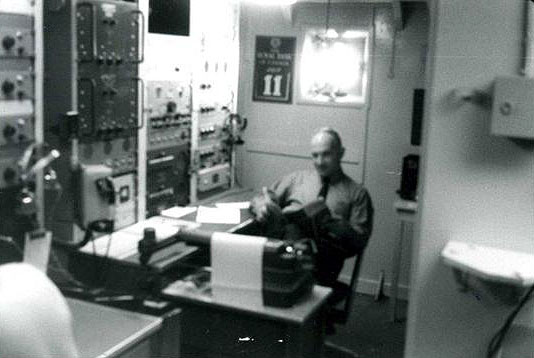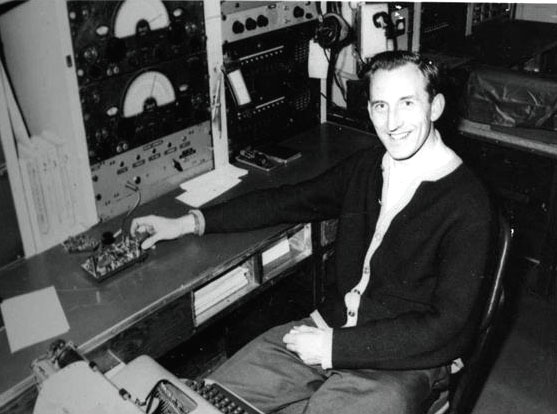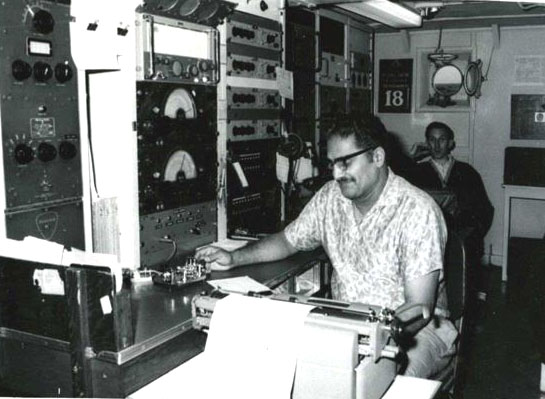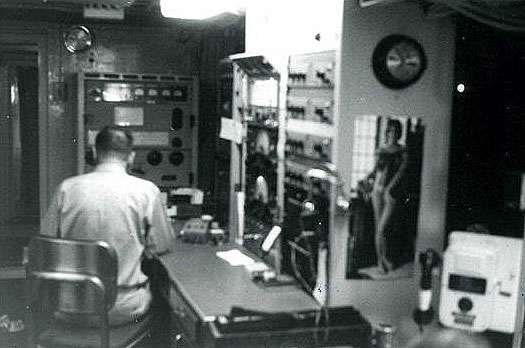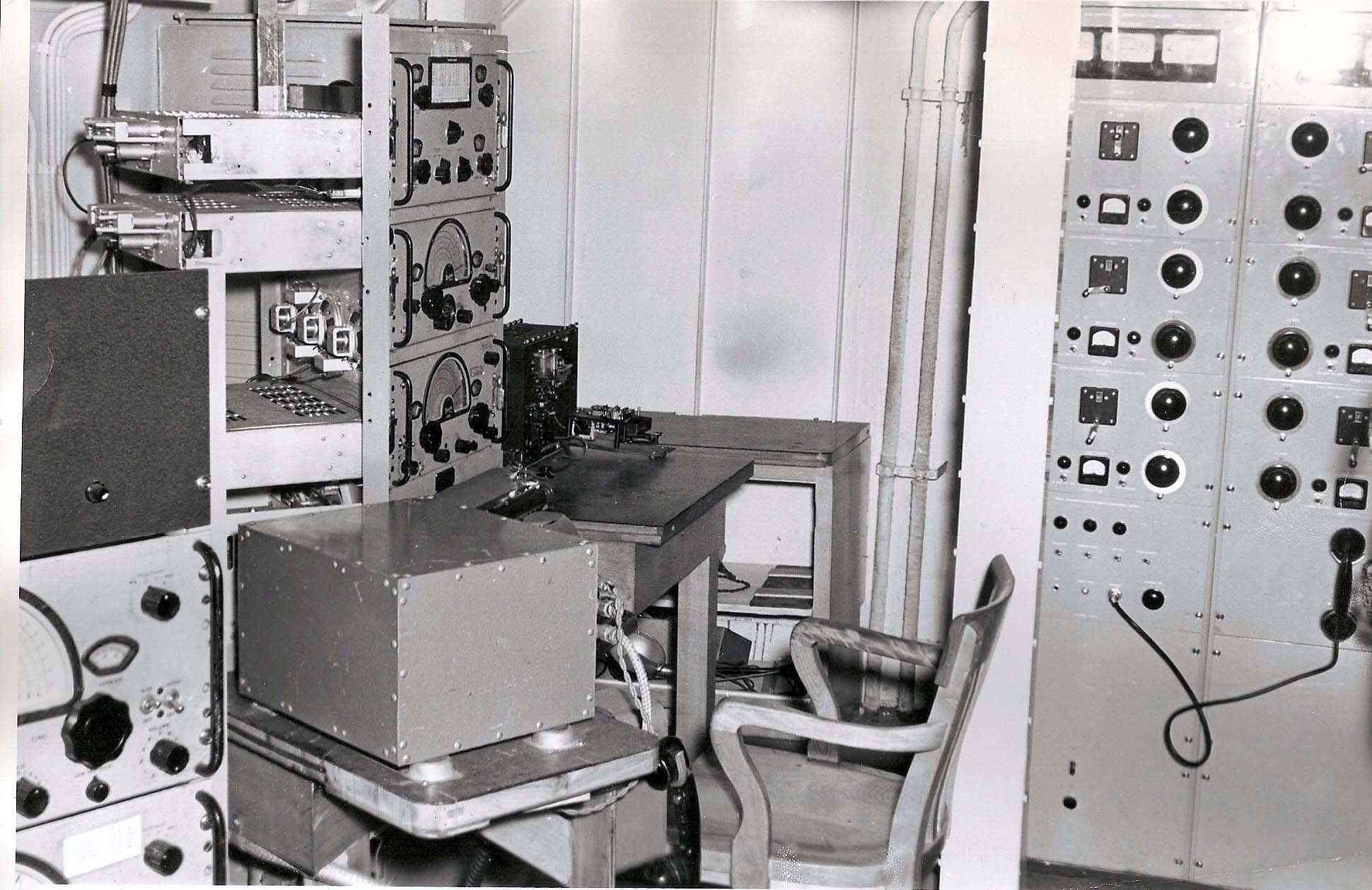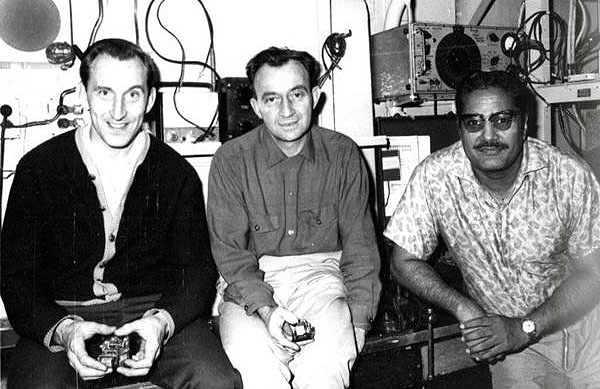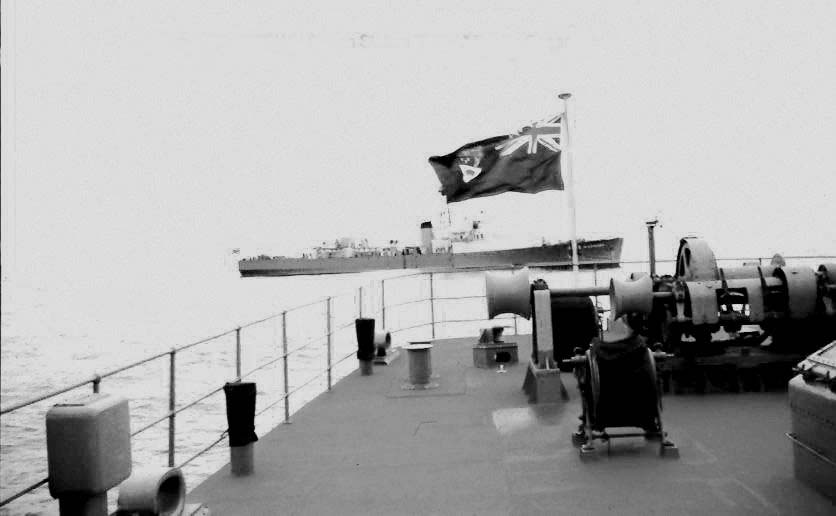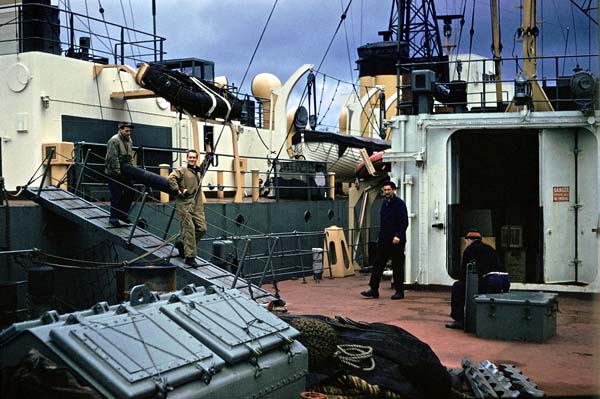 |
| 1961: Loading hydrogen gas tanks for the
radiosonde balloons. Cheaper and more abundant (but flammable) hydrogen
gas was used to fill the balloons instead of precious helium.
When CCGS Vancouver and Quadra came into service, a switch was made from hydrogen to helium because the helium tanks were stored in rows and rows of lockers below decks. This would not have been done if the lifting gas was hydrogen. On Earth, helium is relatively rare. Its volume is 0.00052 % of the atmosphere. Most terrestrial helium present today is created by the natural radioactive decay of heavy radioactive elements (thorium and uranium). This "radiogenic" helium is trapped within natural gas in concentrations up to 7% by volume, from which it is extracted commercially by a low-temperature separation process called fractional distillation. The world's supply of helium is dwindling. Besides lifting a radiosonde, sometimes smaller balloons would be launched just to measure a low ceiling. |
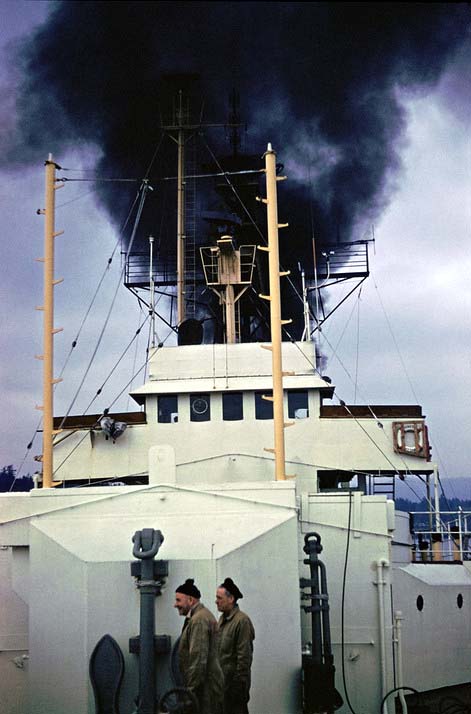 |
| 1961: Stonetown makes smoke as she leaves harbour. |
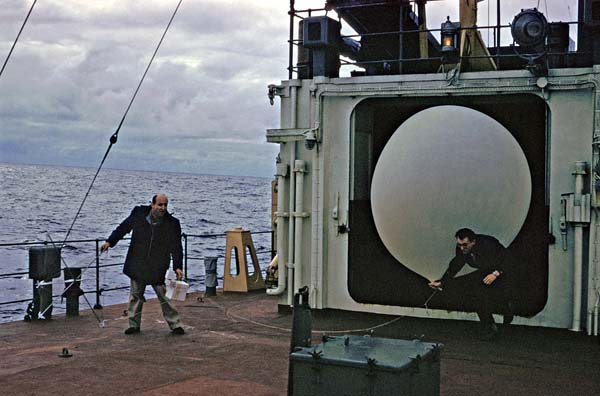 |
| 1961: Jack Scarlett and Paul Carlson launching a radiosonde from the deck of Stonetown. |
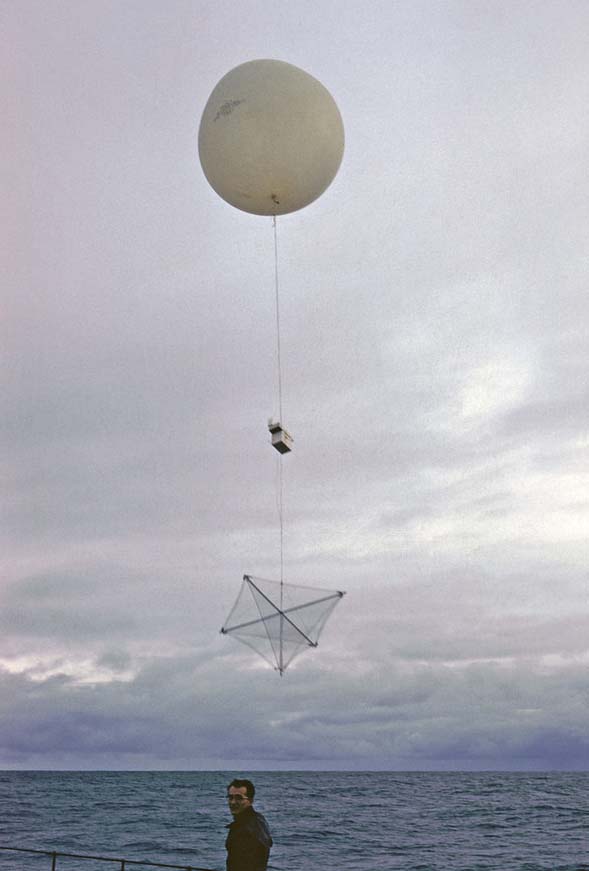 |
| 1961: Paul Carlson has just released the radiosonde. Note the radar reflector at the bottom of the tether.In this era, Radiosondes were normally released every 12 hours at 11:15Z and 23:15Z . |
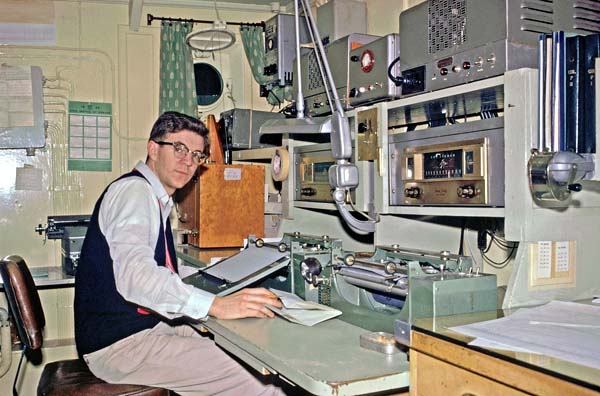 |
| 1962: Peter Willms working the radiosonde recorder aboard Stonetown. |
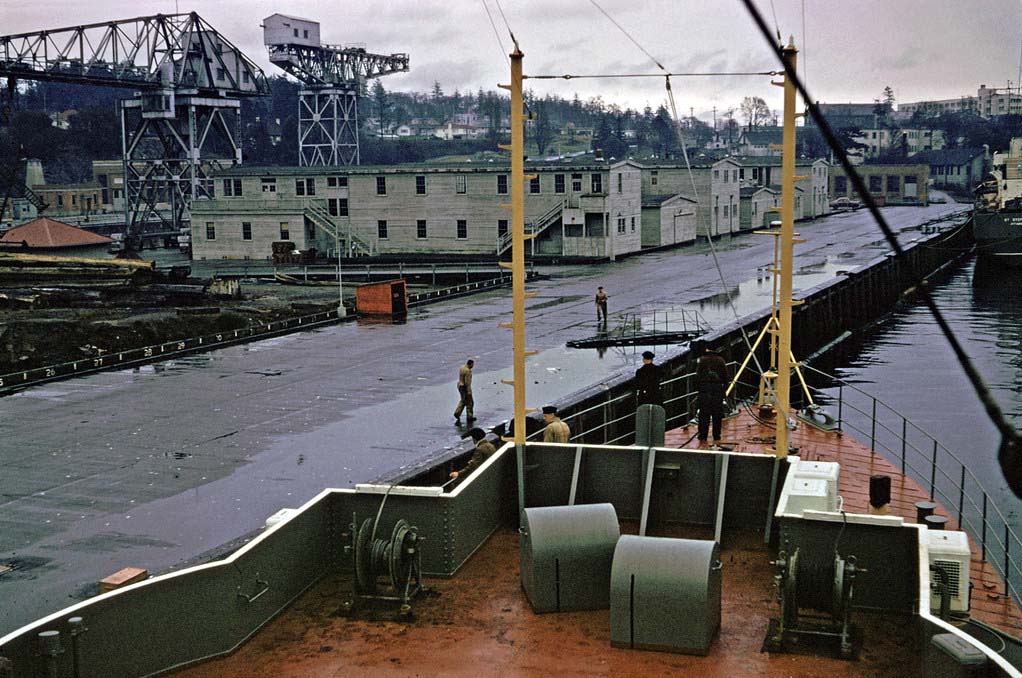 |
| 1961: Stonetown comes alongside her wharf in Esquimalt. |
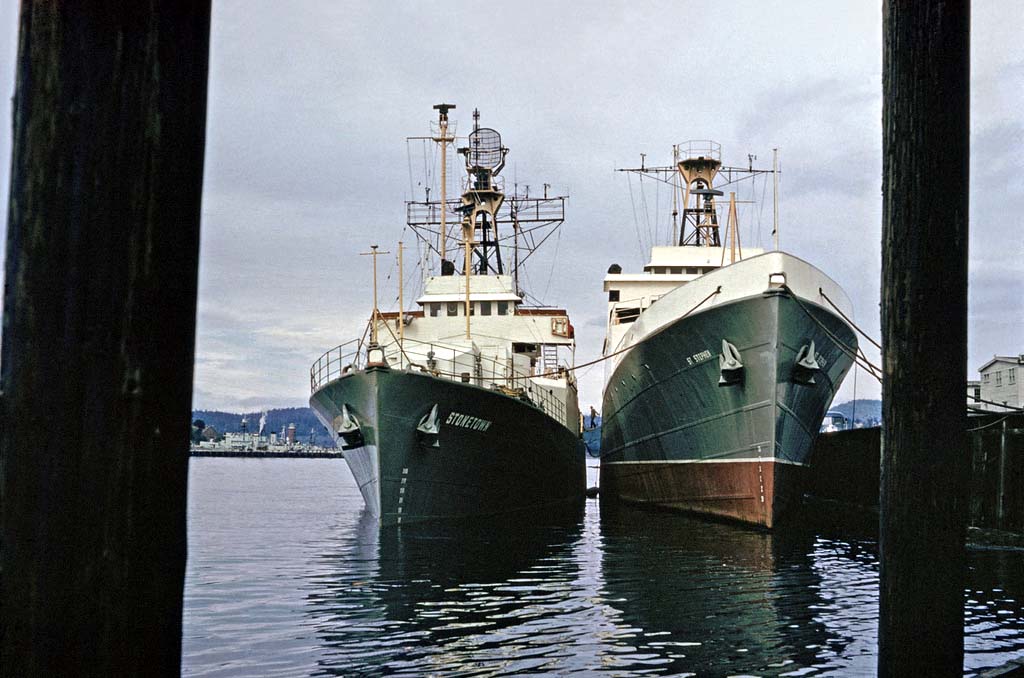 |
| 1961: Stonetown alongside St. Stephen in Esquimalt harbour. |
 |
| 1963: Officer's Mess at Christmas time. |
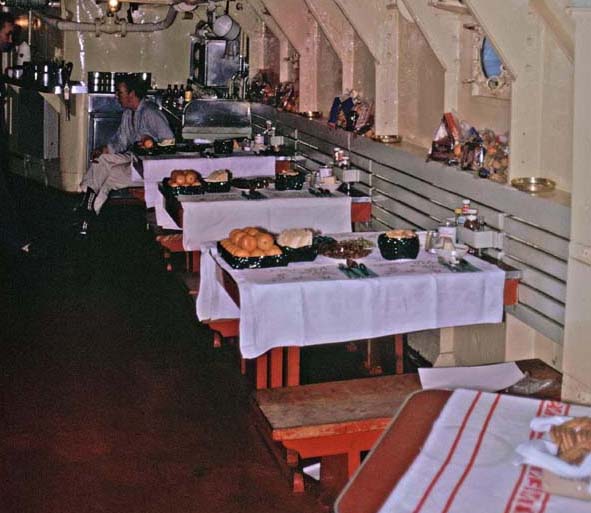 |
| April 1963: Seamen's mess. |
| All photos in this table from the Peter Willms collection |
